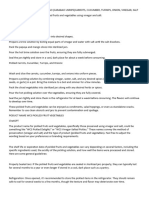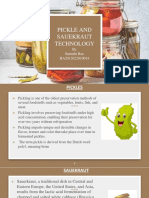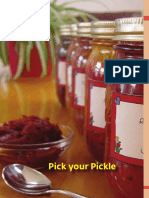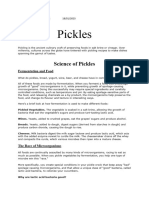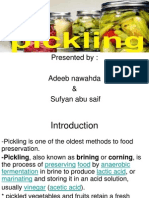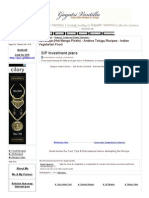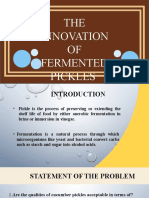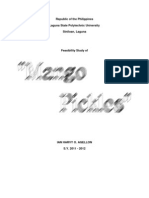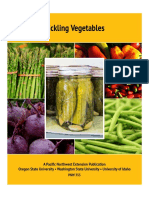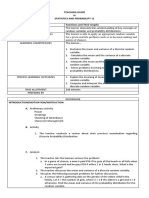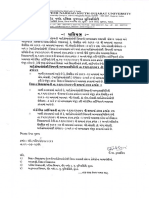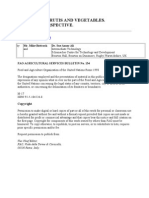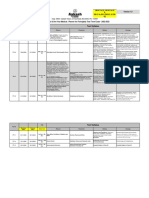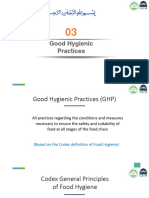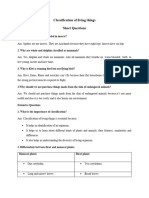0% found this document useful (0 votes)
50 views4 pagesFood Fermentation Script
The document provides a detailed guide on making pickled mangoes, known as 'burong mangga,' a traditional Filipino dish. It includes an introduction to the dish, a list of ingredients, the mechanisms of preservation, a step-by-step procedure for preparation, and a product description highlighting its nutritional benefits. The fermentation process enhances nutrient availability and gut health due to probiotics.
Uploaded by
rose ynqueCopyright
© © All Rights Reserved
We take content rights seriously. If you suspect this is your content, claim it here.
Available Formats
Download as DOCX, PDF, TXT or read online on Scribd
0% found this document useful (0 votes)
50 views4 pagesFood Fermentation Script
The document provides a detailed guide on making pickled mangoes, known as 'burong mangga,' a traditional Filipino dish. It includes an introduction to the dish, a list of ingredients, the mechanisms of preservation, a step-by-step procedure for preparation, and a product description highlighting its nutritional benefits. The fermentation process enhances nutrient availability and gut health due to probiotics.
Uploaded by
rose ynqueCopyright
© © All Rights Reserved
We take content rights seriously. If you suspect this is your content, claim it here.
Available Formats
Download as DOCX, PDF, TXT or read online on Scribd
/ 4






